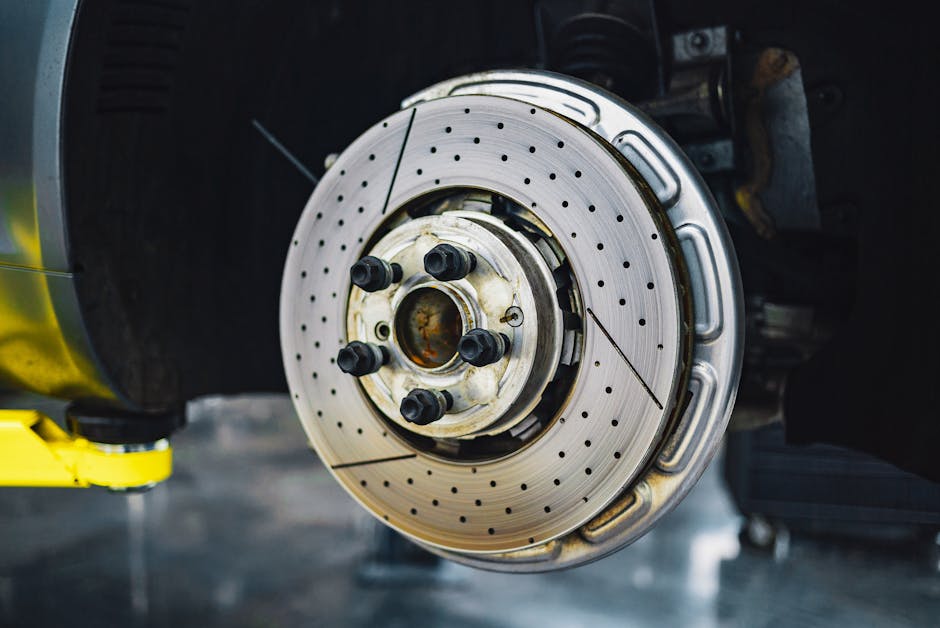The Hidden Costs of Maintaining Legacy Mainframe Systems
As you continue to rely on legacy mainframe systems, you’re likely unaware of the staggering costs buried beneath the surface, from skyrocketing maintenance fees to hidden security risks, that are quietly draining your organisation’s resources and hindering innovation. You’re facing vender lock-in, compliance burdens, and fee surprises, not to mention the hefty bills for hardware replacements and upgrades. Labour costs for scarce skilled personnel are adding up, and security breaches and downtime are looming threats. The true costs go beyond the obvious, hiding in inefficient resource allocation, limited scalability, and opportunity costs of obsolete technology – and it’s just the tip of the iceberg.
Key Takeaways
• Legacy mainframe systems incur hidden costs, including vender lock-in, compliance burdens, and fee surprises, leading to financial strain.• Maintenance and support fees skyrocket due to hardware replacement and upgrade costs, labour costs of skilled personnel, and opportunity costs of obsolete technology.• Security breach risks and compliance burdens lead to financial losses, reputational damage, and legal liability, further straining financial resources.• System inefficiencies, including downtime, inadequate resource utilisation, and inefficient task automation, result in lost revenue, decreased productivity, and damaged reputation.• Legacy systems limit scalability and flexibility, leading to decreased productivity, inflexible architecture, and increased costs, ultimately hindering innovation and competitiveness.
Skyrocketing Maintenance and Support Fees

As you struggle to keep your legacy mainframe systems afloat, you’re likely facing skyrocketing maintenance and support fees that are devouring an increasingly large chunk of your IT budget.
These costs can be particularly egregious when you’re locked into a vender contract, leaving you with limited flexibility and negotiating power. This vender lock-in can lead to cost opacity, making it difficult to understand exactly what you’re paying for and why.
Compliance burdens also contribute to the financial strain, as you’re forced to invest in additional resources to meet regulatory requirements.
The compliance burden is further complicated by audit anxiety, as you worry about passing audits and avoiding costly penalties. And to make matters worse, fee surprises can arise at any moment, catching you off guard and throwing your budget into chaos.
The cumulative effect of these costs can be overwhelming, making it difficult to allocate resources effectively and invest in strategic initiatives.
To guaranty the long-term sustainability of your legacy mainframe systems, you must take a closer look at your maintenance and support fees, identifying areas where costs can be optimised and reduced.
Hardware Replacement and Upgrade Costs

You’re also facing significant hardware replacement and upgrade costs, which can be just as financially crippling as maintenance and support fees, especially when you’re forced to replace obsolete hardware components that are no longer supported by the manufacturer. This equipment obsolescence can lead to a technical debt that continues to accrue interest, making it even more challenging to modernise your legacy mainframe systems.
Here’s a breakdown of the typical hardware replacement and upgrade costs you may incur:
| Component | Average Cost | Frequency |
|---|---|---|
| CPU Upgrades | $10,000 – $50,000 | Every 3-5 years |
| Storage Array Replacements | $50,000 – $200,000 | Every 5-7 years |
| System Board Replacements | $20,000 – $100,000 | Every 7-10 years |
| Power Supply Replacements | $5,000 – $20,000 | Every 5-7 years |
| Memory Upgrades | $10,000 – $50,000 | Every 3-5 years |
These costs can quickly add up, especially when you consider that many legacy mainframe systems have multiple components that require replacement or upgrade at different intervals. By understanding these costs, you can better plan for the financial burdens associated with maintaining your legacy mainframe systems and make a stronger case for modernisation.
Labour Costs of Scarce Skilled Personnel

Finding and retaining skilled personnel to maintain and operate your legacy mainframe systems can be a significant expense, with labour costs skyrocketing due to the scarcity of experts proficient in outdated technologies. As you struggle to find and keep the right talent, you’ll face a multitude of challenges that can drain your resources.
The scarcity of skilled personnel can impact your bottom line in several ways:
Higher salaries: You’ll need to offer competitive salaries to attract and retain the few experts who still possess the skills to maintain your legacy systems.
Staff Retention: With a shrinking pool of skilled personnel, you’ll need to invest in staff retention strategies to prevent your existing talent from jumping ship.
Talent Pipelining: You’ll need to invest in training and development programmes to build a pipeline of future talent, ensuring that you have a steady supply of skilled personnel to maintain your systems.
Overtime and consulting fees: When you can’t find the right talent, you may need to rely on overtime or consulting fees to get the work done, adding to your labour costs.
Security Breach Risks and Liability

Your organisation’s reliance on legacy mainframe systems also increases the risk of a security breach, which can have devastating consequences, including financial losses, reputational damage, and legal liability. As you continue to operate these outdated systems, you’re exposing your organisation to potential security threats that can be exploited by cybercriminals.
| Security Threat | Risk Level | Potential Consequences |
|---|---|---|
| Data Breach | High | Financial losses, reputational damage, legal liability |
| Lack of Encryption | Medium | Unauthorised access to sensitive data |
| Outdated Software | High | Increased vulnerability to cyber attacks |
| Unpatched Vulnerabilities | High | Exploitation by hackers and cybercriminals |
| Inadequate Cyber Insurance | High | Insufficient coverage for breach-related expenses |
The risks associated with legacy mainframe systems are compounded by the lack of adequate data encryption. Without robust encryption, sensitive data is left vulnerable to unauthorised access. Additionally, the absence of cyber insurance or inadequate coverage can leave your organisation financially exposed in the event of a breach.
As you weigh the costs of maintaining legacy mainframe systems, it is vital to prioritise the potential security risks and liabilities. You must evaluate the potential security risks and liabilities. Prioritising data encryption and investing in robust cyber insurance are key to mitigating the financial impact of a potential breach. By doing so, you can reduce the risk of security breaches and protect your organisation’s reputation and bottom line.
Downtime and System Unavailability

Operating legacy mainframe systems puts your organisation at risk of prolonged downtime and system unavailability, which can cripple critical business operations and lead to significant revenue loss. When your system crashes, every minute counts, and the clock is ticking against you.
The consequences of system downtime can be devastating, from lost productivity to damaged reputation and customer trust.
Lost revenue: Every hour of downtime can translate to thousands of dollars in lost revenue, not to mention the long-term impact on customer loyalty and retention.
Decreased productivity: When systems are down, employees are unable to perform their duties, leading to decreased productivity and wasted resources.
Damaged reputation: System downtime can lead to a loss of customer trust and confidence, damaging your reputation and brand image.
Disaster recovery complexity: Legacy systems often lack modern disaster recovery capabilities, making it difficult and time-consuming to recover from system failures.
In the event of a system crash, your organisation needs to be prepared to respond quickly and effectively to minimise downtime and ensure business continuity. A comprehensive disaster recovery plan is crucial to ensure that your organisation can recover quickly and efficiently.
Inefficient Resource Allocation

As you assess the resource allocation in your legacy mainframe system, you’ll likely find that it’s plagued by inefficiencies that hinder peak performance.
You’re wasting your IT talent pool on mundane tasks, and automation is limited, leading to inadequate utilisation of resources.
These inefficiencies not only drain your budget but also stifle innovation and hinder your ability to respond to changing business needs.
Wasted IT Talent Pool
Mainframe systems perpetuate a significant waste of IT talent by allocating skilled professionals to mundane, repetitive tasks, rather than leveraging their expertise to drive innovation and business growth. As you continue to maintain your legacy mainframe systems, you’re not only wasting valuable resources but also risking the loss of top talent.
Brain Drain: Your most skilled professionals will seek opportunities that challenge them and provide opportunities for growth, leaving your organisation with a less experienced team.
Skill Stagnation: As your team focuses on maintenance rather than innovation, their skills become outdated, making it difficult for them to adapt to new technologies.
Lack of Innovation: With your top talent tied up in maintenance, you’re missing out on opportunities to drive business growth and stay competitive in the market.
Inefficient Resource Allocation: The more time and resources spent on maintenance, the less you have available for strategic initiatives that drive business value.
Inefficient Task Automation
Every day, your IT team spends a significant amount of time on manual, repetitive tasks, such as data entry, report generation, and file transfers, which could be automated, freeing up resources for more strategic initiatives.
These tasks, although vital, aren’t only time-consuming but also prone to errors, requiring manual interventions to rectify them. Additionally, the reliance on batch processing, which is inherently inflexible, further exacerbates the issue.
By automating these tasks, you can redirect your team’s focus towards more value-added activities, such as application development, data analytics, or innovation.
Inefficient task automation not only hinders your team’s productivity but also perpetuates the reliance on legacy systems, making it challenging to adopt modern technologies and stay competitive.
Inadequate Resource Utilisation
Your IT team’s productivity is hindered by inadequate resource utilisation, where valuable processing power and memory are wasted on inefficient applications, instead of being allocated to high-priority tasks that drive business value.
This inefficient allocation of resources leads to underutilised assets, which are a significant burden on your organisation.
-
Idle processors: Your mainframe processors aren’t being utilised to their full capacity, resulting in wasted resources.
-
Memory leaks: Inefficient applications are consuming valuable memory, slowing down your system and hindering performance.
-
Resource silos: Separate teams or departments are working in isolation, leading to duplicated efforts and wasted resources.
-
Inefficient workflows: Manual processes and outdated workflows are hindering productivity and wasting valuable resources.
Limited Scalability and Flexibility

As your organisation’s transaction volume increases, the tightly coupled architecture of legacy mainframe systems hinders their ability to scale efficiently, forcing you to make costly hardware upgrades or rely on complex workarounds.
This rigid architecture is a significant constraint, making it difficult to add new resources or allocate existing ones efficiently. The result is a system that’s prone to bottleneck effects, where a single component’s limitations slow down the entire system.
When you try to scale your mainframe system, you’ll likely encounter significant challenges. Adding new resources may not necessarily improve performance, as the system’s architecture can’t efficiently distribute the workload.
This leads to underutilised resources, wasted investments, and decreased productivity. In addition, the complexity of these systems makes it difficult to identify and address performance bottlenecks, further exacerbating the problem.
The lack of flexibility in legacy mainframe systems also hampers your ability to adapt to changing business needs. When you need to integrate new applications or services, the inflexible architecture of these systems makes it difficult to do so efficiently.
This forces you to invest in expensive workarounds, further increasing the total cost of ownership. By understanding the limitations of legacy mainframe systems, you can begin to plan for a more scalable and flexible infrastructure that supports your organisation’s growth.
Opportunity Costs of Obsolete Technology

As you maintain legacy mainframe systems, you’re not only shouldering the burden of outdated technology, but you’re also forfeiting opportunities for innovation and growth.
By clinging to obsolete systems, you’re limiting your capacity for innovation, misallocating resources, and potentially missing out on lucrative business opportunities.
These opportunity costs can have far-reaching consequences, affecting your organisation’s competitiveness and bottom line.
Limited Innovation Capacity
By clinging to outdated mainframe systems, organisations sacrifice the opportunity to invest in modern technologies that could have fuelled innovation and growth. You’re not just stuck with outdated technology, you’re also stifling creativity and progress. Your team’s innovative potential is hindered by outdated methodologies that fail to keep pace with the rapidly evolving digital landscape.
Cloud-based scalability: Your competitors are leveraging the cloud to quickly scale and respond to changing market demands, while you’re stuck with inflexible mainframe systems.
Artificial intelligence and machine learning: You could be using AI and ML to drive automation, improve customer experiences, and uncover new business insights, but instead, you’re stuck in the past.
Real-time data analytics: Your organisation could be making data-driven decisions and responding to market shifts in real-time, but outdated mainframe systems are holding you back.
Mobile-first engagement: You’re missing out on opportunities to engage with customers and employees through modern, mobile-friendly interfaces that are essential for today’s digital-native users.
Inefficient Resource Allocation
With outdated mainframe systems consuming a disproportionate share of your IT budget, you’re forced to allocate resources to maintain antiquated technology, rather than investing in modern solutions that drive innovation and growth.
This inefficient resource allocation leads to operational inefficiencies, resulting in a significant waste of resources. You’re pouring valuable resources into keeping legacy systems afloat, rather than investing in modern, agile solutions that can help your organisation stay competitive.
The opportunity costs of maintaining legacy mainframe systems are staggering.
The resources you’re allocating to keep these systems running could be better spent on modernising your infrastructure, enhancing cybersecurity, or developing innovative solutions that drive business growth.
Instead, you’re stuck in a cycle of maintenance and repair, wasting valuable resources on outdated technology.
This inefficient allocation of resources not only drains your budget but also hinders your organisation’s ability to innovate and adapt to changing market conditions.
Missed Business Opportunities
Your organisation is likely forfeiting significant revenue streams and competitive advantages by clinging to outdated mainframe systems, which are incapable of supporting the agility and innovation required to capitalise on emerging business opportunities.
By holding onto legacy systems, you’re in effect crippling your progress, stifling innovation, and limiting your ability to respond to changing market conditions.
Delayed time-to-market: Legacy systems can’t keep up with the rapid pace of digital transformation, causing you to lag behind competitors in launching new products and services.
Inability to leverage emerging technologies: Outdated mainframe systems can’t integrate with cutting-edge technologies like AI, blockchain, or IoT, preventing you from tapping into their transformative potential.
Stagnant growth: By failing to innovate, you’re perpetuating stagnant growth, forfeiting revenue, and ceding market share to more agile competitors.
Innovation paralysis: The complexity and inflexibility of legacy systems can lead to a state of innovation paralysis, where even minor changes become overwhelming, let alone attempting to drive meaningful innovation.
Conclusion
You may think that keeping your legacy mainframe systems is the cost-effective option, but think again.
The truth is, maintaining outdated technology can lead to a plethora of hidden costs that can quietly drain your resources.
From skyrocketing maintenance fees to security breach risks, the expenses add up quickly.
Don’t let nostalgia for familiar systems hold you back – it’s time to modernise and break free from the weight of legacy technology.
Contact us to discuss our services now!
